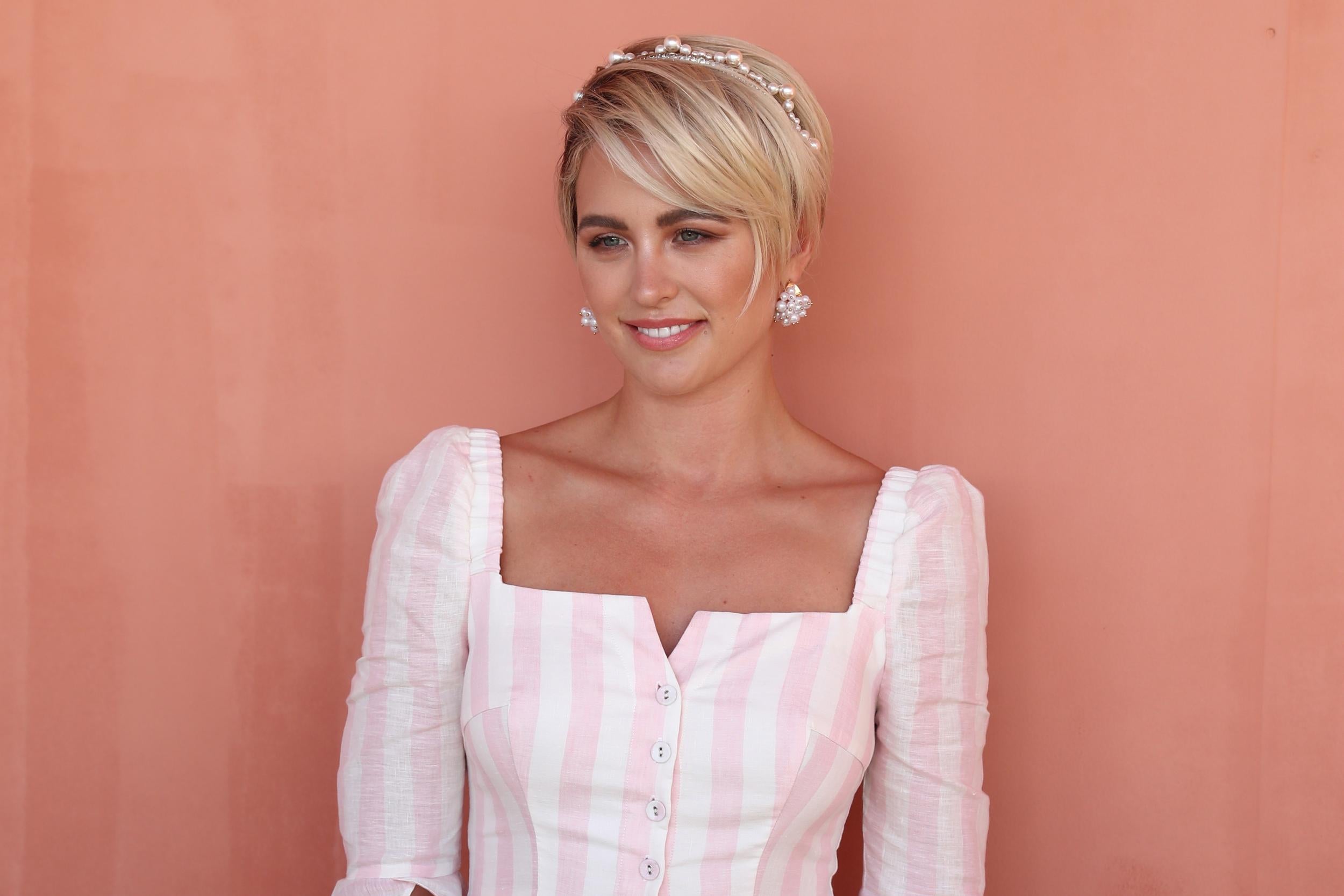The history of the pixie cut hairstyle
TV presenter Jesinta Franklin recently debuted her new shorter hairstyle in Melbourne

Australian TV presenter and model Jesinta Franklin has followed in the footsteps of stars such as Audrey Hepburn and Emma Watson by debuting a new, shorter pixie cut hairstyle.
The origins of the pixie cut date all the way back to the early 20th Century, when women dared to break the moulds of femininity by cutting their hair shorter than they ever had before for the first time.
Pixie cuts can come in a variety of lengths, from half an inch to a few inches long.
Following the devastation of the First World War, the excitement of the Roaring Twenties gave women a new sense of freedom, during which many started wearing shorter "flapper" dresses and experimenting with new styles.
In 1927, opera singer Mary Garden wrote about her decision to cut her hair in an issue of American women's magazine Pictorial Review.
In an article titled: "Why I Bobbed My Hair", she wrote that shorter hair is a "state of mind and not merely a new manner of dressing my head".
"I consider getting rid of our long hair one of the many little shackles that women have cast aside in their passage to freedom," she continued.
18 of the most iconic celebrity pixie cuts
Show all 18While short hair boomed in popularity during the 1920s, the trend died down slightly in the decades that followed. That is, until Audrey Hepburn's Oscar-winning performance in the 1953 romantic comedy Roman Holiday.
Hepburn is credited with popularising the pixie cut in the 1950s due to her short hairstyle in the film, in which she plays a royal princess exploring Rome, Italy on her own.
The actor's hairstyle is an important aspect of the film's plot, as her character, Princess Ann, has her long hair cut short in order to conceal her true identity.
As the years passed, numerous other female celebrities began cropping their hair in a style similar to Hepburn, most notably actor Mia Farrow in the 1968 psychological thriller Rosemary's Baby and supermodel Twiggy in the 1960s.
Farrow wrote in her 1997 memoir about the negative reaction her pixie cut received when she revealed it on set of the 1960s TV show Peyton Place, which she starred in prior to Rosemary's Baby.
"I didn’t ask for permission because I knew I wouldn’t get it," she wrote.
"It looked fine to me. But the hairdresser was aghast, and the producers were upset, and people with wigs were summoned, and there were stern lectures about responsibility, and I apologised a lot, but privately I couldn’t see a problem."
Other stars to have sported the pixie cut throughout the decades have included singer Madonna in the 1980s, actor Jacqueline Pearce in 1970s British sci-fi series Blake's 7 and actor Halle Berry in the 2002 James Bond film Die Another Day.
One of the most newsworthy pixie cuts of recent times was that of actor and activist Emma Watson, who famously cut her hair short after production for the Harry Potter film series had completed.
She explained in an interview with Wonderland magazine in 2014 that cutting her hair had been a liberating experience.
"To be honest, I felt more myself with that haircut. I felt bold, and it felt empowering because it was my choice," she said.
"It felt sexy too. Maybe it was the bare neck, but for some reason I felt super-, supersexy."
Subscribe to Independent Premium to bookmark this article
Want to bookmark your favourite articles and stories to read or reference later? Start your Independent Premium subscription today.

Join our commenting forum
Join thought-provoking conversations, follow other Independent readers and see their replies